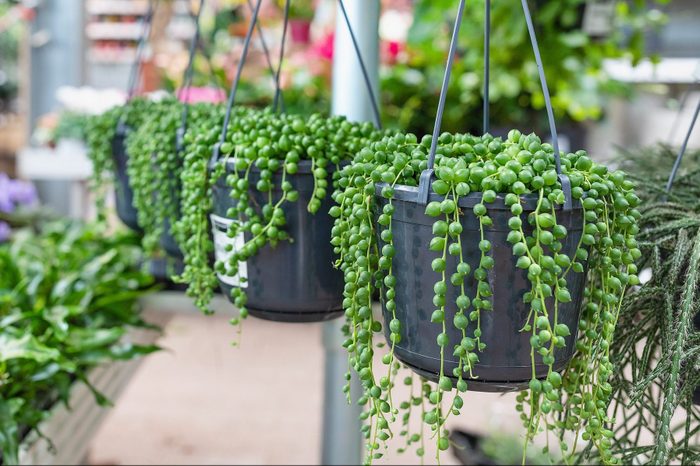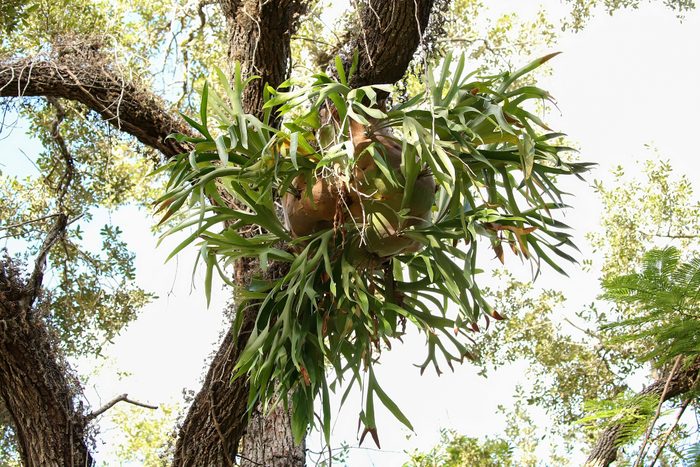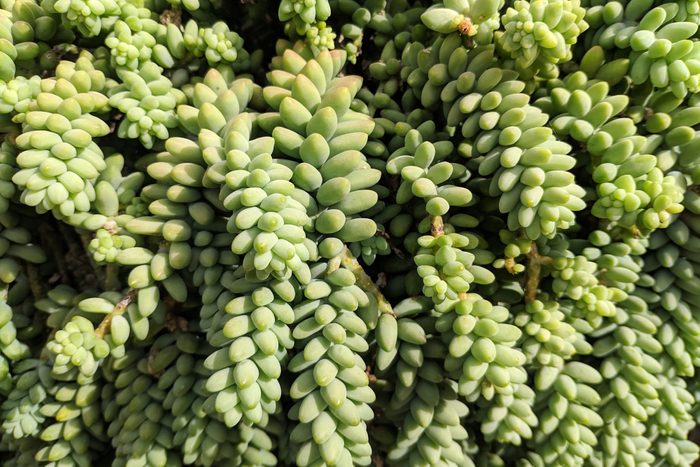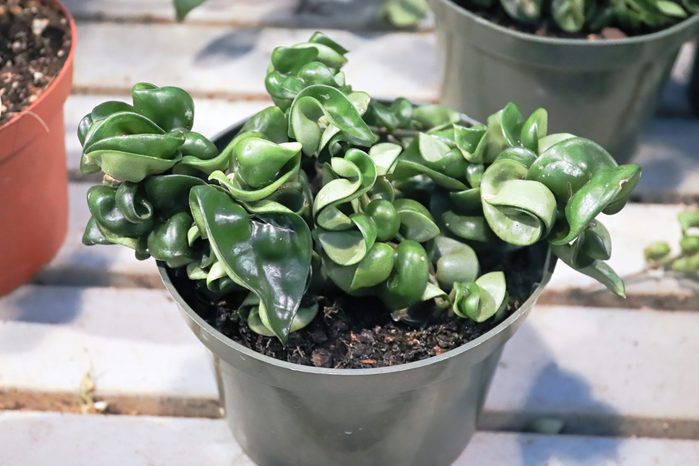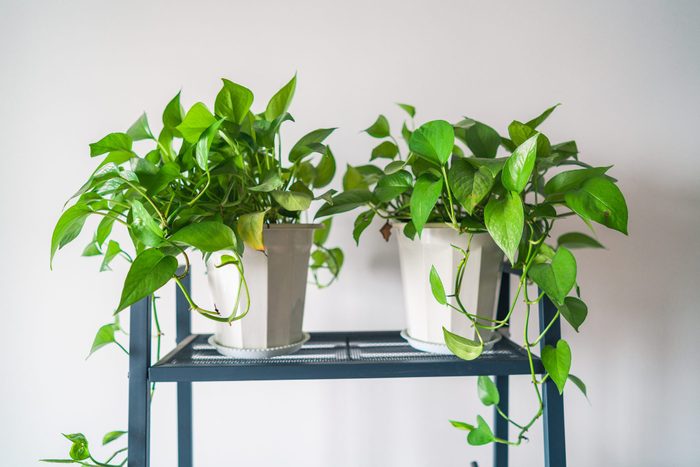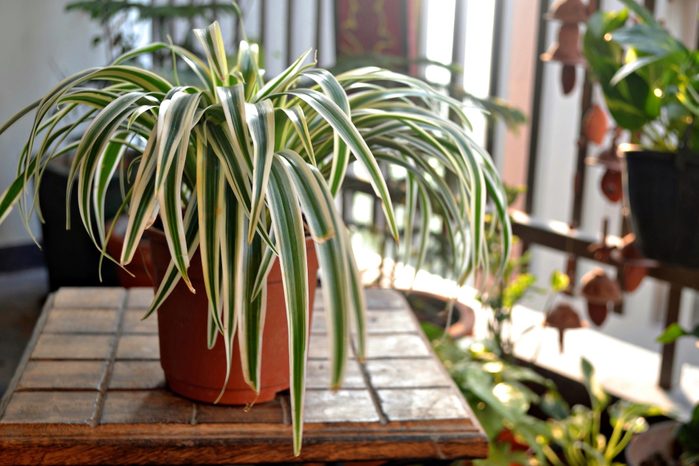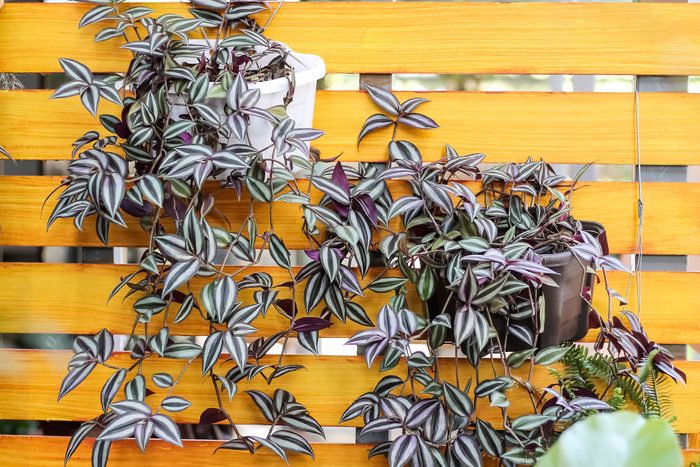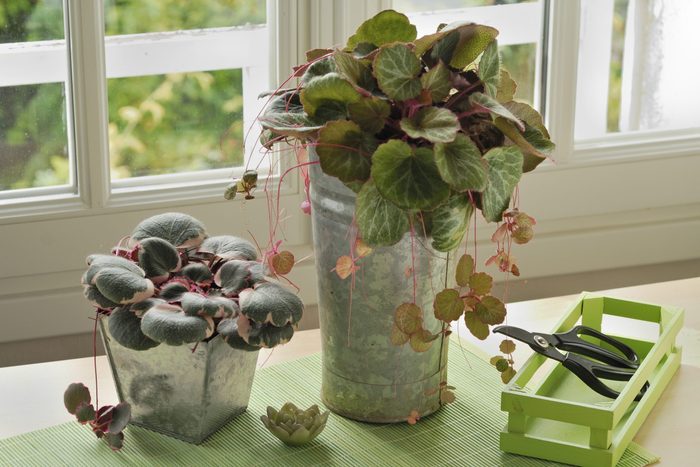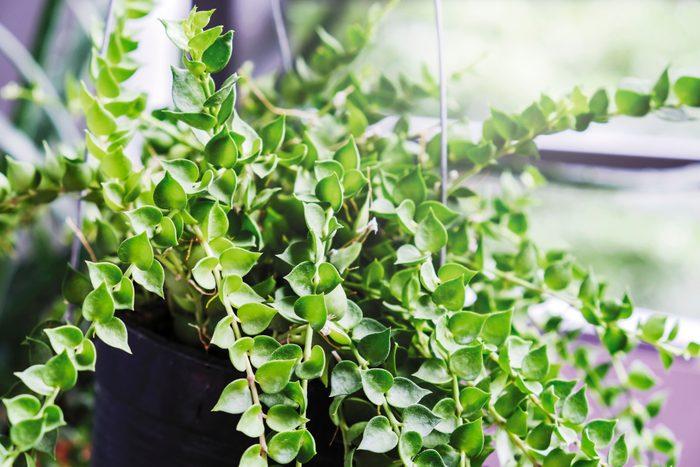


Choosing Trailing Plants
Trailing plants come in many shapes and sizes. Some, like string of hearts, hang straight down, while others have, like spider plant, have volume around the base. That means there’s something for every space and every planter.
These gorgeous trailing plants have enough character to stand alone, and some are perfect for adding dimension to a mixed container. Whether you’re planting a hanging basket, placing a pot on a high shelf or adding a wall planter to your backyard fence, these trailing plants are sure to add plenty of texture and color to your space.
Before choosing a trailing plant, research its care to decide if it fits your home and gardening style. A plant that works in the dim corner of a home office might burn in the direct sun of your fence’s vertical garden. And a plant that loves humid bathroom windows might struggle in other parts of a home.
If all else fails, you can adjust your home’s environment with grow lights, humidifiers and other indoor garden supplies.

String of Pearls (Senecio rowleyanus)
This unusual succulent looks pretty enough to wear, and its delicate strands add plenty of green to your home. Its striking, spherical leaves grow in strings up to three feet long, according to the University of Wisconsin Horticulture Division of Extension.
Although this succulent looks unique, its care isn’t much different from other succulents. Plant it in well-draining potting soil, place it in bright light and water it infrequently when completely dry. String of pearls has shallow roots so the container doesn’t need to be deep. Hanging planters and shallow troughs are common choices for this trailing plant.

Staghorn Fern (Platycerium bifurcatum)
Ferns have been popular trailing plants for ages, but the staghorn fern has a much different shape than common variants like the Boston fern. Also called elkhorn ferns, they’re aptly named due to their resemblance to deer or elk antlers.
These trailing plants are big — up to three feet across, according to the University of Wisconsin Horticulture Division of Extension. The University of Vermont Extension notes staghorn ferns are particularly sensitive to low humidity, so this is one plant that definitely benefits from a humidifier. Smart humidifiers allow you to set a schedule that works for you and your plants.

Burros Tail (Sedum morganianum)
Another popular trailing succulent is burros tail, often labeled sedum burrito in stores. This is also named for its strong resemblance to an animal part, in this case a donkey tail.
Its leaves are a pretty light green shade and can even have a blueish tint. These plants are fragile, so place yours where it won’t get bumped; the slightest brush can cause leaves to fall off in droves. Fortunately this succulent is easy to propagate, so if you lose some leaves you can turn them into new plants.

String of Hearts (Ceropegia woodii)
String of hearts has been having a major moment on social media recently, and it’s easy to see why. The adorable heart-shaped leaves grow in long, elegant strands. Variegated string of hearts has lovely white and pink leaves.
The University of Wisconsin Horticulture Division of Extension says it likes coarse, well-draining soil and should only be watered when dry. It likes to be crowded so you’ll rarely need to repot this plant. Detangling the strings is one chore unique to this trailing plant.

Hoyas (hoya linearis)
Hoyas are a group of houseplants with tons of variety and resilience. They’re also called wax plants, and many varieties have their own nicknames too, such as the sweetheart plant (hoya kerrii) and the Hindu rope plant (more on these below).
While many hoyas have broad, waxy heart- or spade-shaped leaves, hoya linearis has skinny leaves. Hoyas tend to be slow-growing, but with proper care and patience they’ll reward you with beautiful clusters of flowers.

Hindu Rope Plant (Hoya carnosa compacta)
Here’s another hoya with unusual leaves: Hindu rope plant (AKA Krinkle Kurl). These trailing plants have some of the most distinct leaves on this list. They’re thick and waxy like most hoyas, but curled up and tightly spaced.
Hindu rope may look like a demanding plant, but like most hoyas it’s actually low maintenance. Plant in chunky, well-draining soil, then place in bright, indirect light and water when dry. The folded leaves are good hiding places, so keep an eye out for pests and consider using preventative treatments.

Pothos (Epipremmum aureum)
Pothos, also called devil’s ivy, is easy to find in most plant stores. It’s one of the most common houseplants in the U.S., but its shiny leaves and color variety prevent it from getting boring.
Neon pothos (see photo) is one example of this trailing plant’s incredible color. It works well on its own in hanging baskets, as a filler for mixed containers or even in a tabletop planter, where it can be trained to climb or kept short with pruning.
Pothos prefers indirect or filtered light and is easy to care for, so the University of Wisconsin Horticulture Division of Extension recommends it for beginners.

Spider Plant (Chlorophytum comosum)
Spider plants are another common houseplant. Its defining feature: Small, spider-like offshoots. You may also hear these called plantlets, pups, spiders or even spiderettes. The pups vine down from the main plant.
These are easy to grow or propagate. You can plant them directly into soil or root them in water first. Spider plants are also known as an effective air purifying plant.

Spiderwort (Tradescantia zebrina)
Tradescantia zebrina, commonly called spiderwort and wandering dude, is a good trailing plant for people who want to add a little color to their collection. The rich purple or magenta foliage has silvery-green zebra stripes. It’s often planted as a filler in mixed containers, but it also grows well as a solo houseplant.
The University of Wisconsin Horticulture Division of Extension says this tough plant will thrive in almost any indoor conditions, but the colors will be most vibrant in full sun.

Strawberry Begonia (Saxifraga stolonifera)
This trailing plant is called strawberry begonia, strawberry geranium and mother of thousands. Whatever you call it, it’s adorable.
Its fuzzy, scalloped leaves shoot off runners with little plantlets, much like a spider plant, but without the resemblance to spiders. Some varieties have cream or pink edges around the leaves. It’s a fast-growing houseplant and will need to be repotted more often than others.
According to The Royal Horticultural Society, strawberry begonia is a low-light plant, preferring part to full shade.

Million Hearts (Dischidia ruscifolia)
The leaves of this plant grow close together with a subtle heart shape, hence the name million hearts. The trailing hearts make this a good alternative or complement to a string of hearts plant, but these vines are sturdier and less likely to become tangled.
As a semi-succulent, million hearts needs well-draining soil but doesn’t need a deep pot. Unlike most succulents, it does well in partial sun or dappled shade, according to the National Gardening Association.
Did you miss our previous article…
https://tophouseimprovement.com/how-to/9-best-gas-leaf-blowers/

